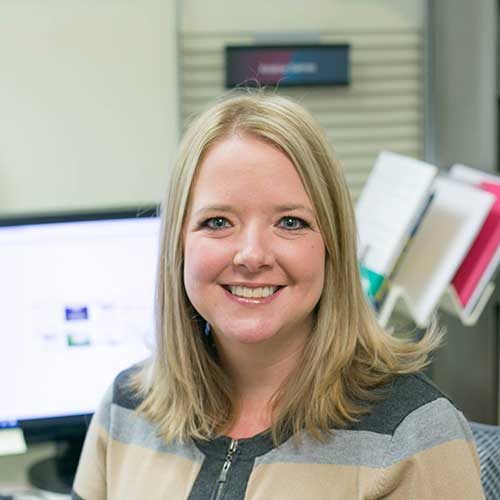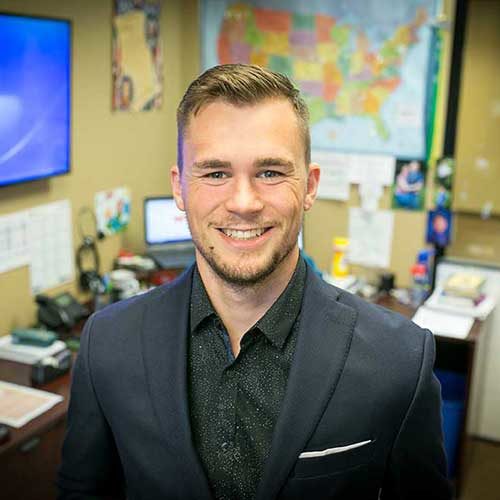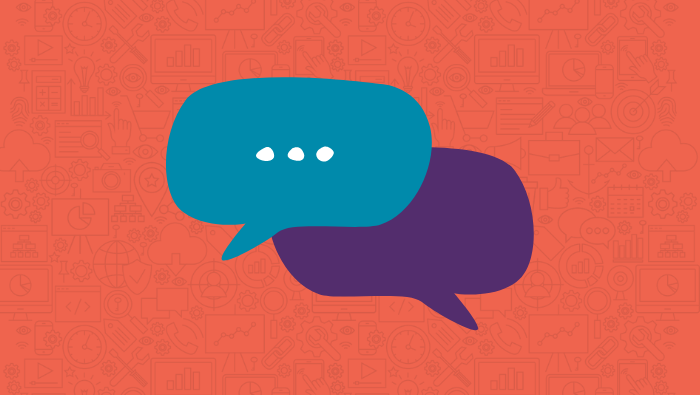
Kristina Salinas

Micah Bobiak
Question: Can you share your early experiences of when your hearing loss was diagnosed, your hearing journey, and how your family provided hearing aids as a treatment?
Kristina: I was born three-months premature in an Army hospital in Hawaii. My hearing loss was not diagnosed until I was in first grade, when the teacher noted I was having difficulty catching onto reading. My first set of hearing aids were expensive, and my parents had to figure out a way to purchase them. I wore these devices until sixth grade.
Micah: My hearing loss was diagnosed at birth in the hospital. My older sister, on the other hand, was not diagnosed with her hearing loss until she was four years old. I was raised in a family that championed acceptance, and my parents were good in providing what was needed. With both me and my sister having been diagnosed with hearing loss, my dad realized early that he and my mother were going to have medical expenses, and dad chose jobs that had good insurance. In addition, my parents wanted the best education and social life for me and my sister, which included us being enrolled in speech therapy.
Question: What about your early experiences as a hearing aid user?
Kristina: Starting in seventh grade, I decided not to wear my hearing aids as they were rather large, and I was ridiculed by my peers; I wanted to fit-in with my peers. My apprehension to wear hearing aids was further increased by the fact that I moved to a different school system (i.e., Bellevue, WA). To lessen my hearing inabilities, I sat closer to the front of the class and read lips during my teenage years. As I entered college, I resumed wearing hearing aids because I couldn’t control my environment. After college, I took a job in banking and struggled to hear because of the background noise.
Micah: I was always the kid with the hearing aids; bright, yellow ones. Growing up on Bainbridge Island in a class of 250 students, I was the only one with hearing loss. Thus, I normalized hearing loss for other kids. There were times—in fifth and sixth grade—where I got bullied because of my hearing loss and my size, but these experienced ultimately made me stronger. Because of my hearing loss, the district installed a classroom FM when I was in second grade. Despite the technology, some teachers did not want to use it.
Question: Who fit your first set of hearing aids?
Kristina: My first devices, by coincidence, were fit by an Audigy provider. The devices were AGX brand. I have worn AGX devices ever since.
Micah: I was fit by an audiologist with whom I had a relationship for 18 years. In fact, the front office staff knew me for 12 years. The biggest challenge with my analog devices was the battery doors, which needed constant replacing. We found that duct tape worked better than the replacing the battery door hinges! I also recall that the first set of digital devices (i.e., Widex Senso Divas) were clunky and had a slow start-up time. However, the digital devices came with added programs, or memories, that matched my lifestyle. In high school, my audiologist helped create a program that allowed me to hear sound behind me so that I could hear better in theater class.
Question: What about hearing aid technological advances? Which one(s) did you find as being beneficial?
Kristina: Since joining Audigy, I have upgraded my hearing aid technology. I love the Bluetooth feature, as it allows me to stream calls, music, driving directions, and videos directly from my smartphone to my devices. This feature also cuts out background noise. In the future, I would like to experiment with assistive listening technology and learn more about different programs/memory options.
Micah: I have tried a lot of technology and currently am wearing Signia Stilettos. My all-time favorite device, however, is the Widex Quattro. The technology is great, but I encourage providers to try different domes on different devices as it changes the sound quality. My preference is the Oticon domes. I am also an advocate for classroom FM systems. Feature-wise, I use the Bluetooth option and accessories all the time. I also enjoy using the GN mini mike, especially in a corporate environment. I utilize my smartphone apps to customize my soundscape, and I create my own programs for when I run, listening to music, etc.
Question: How does your experiences help you with your job responsibilities at Audigy?
Kristina: Audigy helps to normalize my work environment. No one at Audigy sees my hearing loss as something wrong. Also, my experiences allow me to relate to providers when discussing patient care. I enjoy sharing tidbits about my experiences for people to have a better understanding; it’s often difficult to relay the human-person side unless you personally experience it.
Micah: One of my goals is to communicate gratitude to those who do an amazing job every day and to encourage anyone to be better than what that think they are, based on the experiences I’ve had.
Knowing his future of anticipated additional hearing and vision loss, Micah remains positive and appreciative of those who have helped him in this journey and like Kristina, is very willing to share their experiences with anyone, co-worker or member.
Thank you, Micah and Kristina, for sharing your journeys with us.

